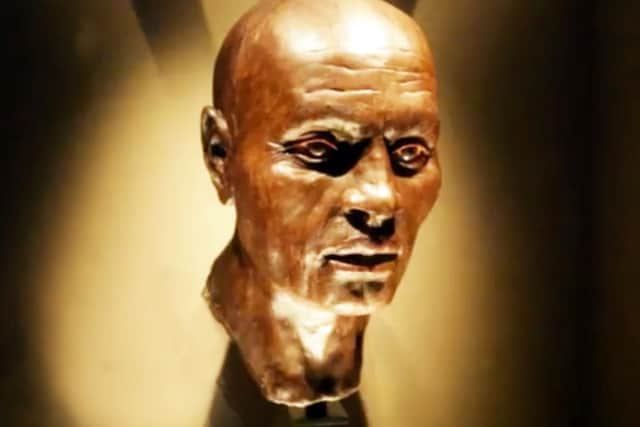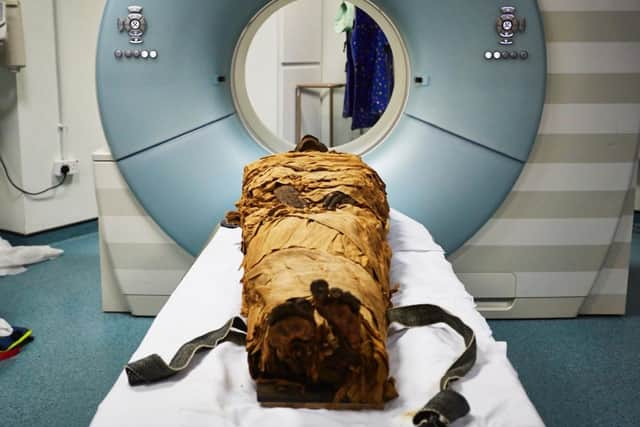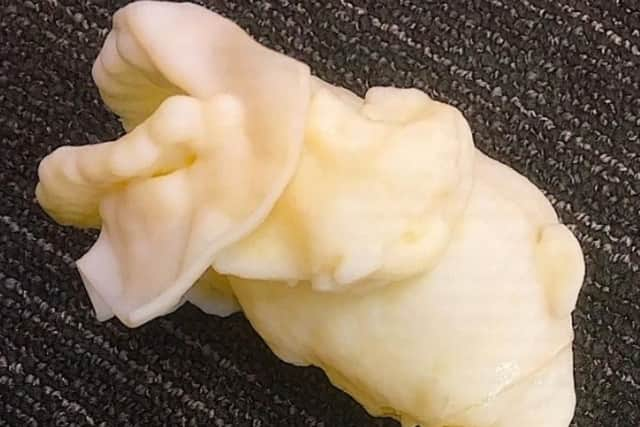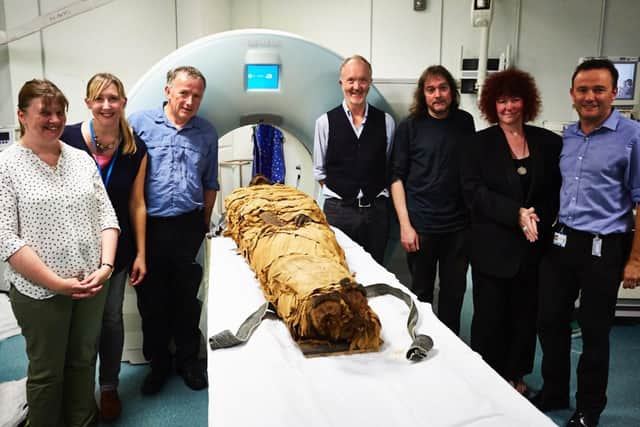Listen to Ancient Egyptian Leeds Mummy 'talk' for first time in 3,000 years
The voice belongs to Nesyamun, also known as The Leeds Mummy, a priest, incense-bearer and scribe at the time of Ramses XI, from the ancient state temple of Karnak in Thebes, or modern Luxor.
Nesyamun's remains - since 1823 held at Leeds City Museum - were well preserved, as a result of the mummification process, with his larynx and throat intact.
Advertisement
Hide AdAdvertisement
Hide AdIn a world first experts from the Universities of York and London have created a 3D print of the mummy's voice box after CT scans at Leeds General Infirmary.


They attached an electronic larynx and have produce a sound, like the vowels in the English words ‘bed’ and ‘bad’, not unlike a sheep's bleat.
Next phase of the so-called Voices From The Past project, headed by York Professor John Schofield, is to produce complete words and sentences.
VIDEO: Listen to the mummy speak for the first time in 3,000 years - CLICK HERE
Advertisement
Hide AdAdvertisement
Hide AdNesyamun's died in his mid-50s, around 1100 BC. The mummy had severely worn, protruding teeth which will also impact on the way he talked and, unusually for an Egyptian mummy, his tongue still protrudes.


BBC TV Egyptologist Prof Joann Fletcher and her partner, archaeological chemist and mummification expert Dr Stephen Buckley, both of University of York, are a key part of the team.
They helped win a BAFTA for the 2011 Channel 4 documentary Mummifying Alan: Egypt’s Last Secret, which involved mummifying taxi driver Alan Billis, to replicate rediscovered secrets of the complex ancient process, at Sheffield’s Medico-Legal Centre.
Prof Fletcher said Nesyamun's wish to speak after his death was now coming true after more than 3,000 years.
Advertisement
Hide AdAdvertisement
Hide AdBarnsley born Prof Fletcher, now living in Scarborough, said: "A fundamental Egyptian belief was to speak the name of the dead to make them live again and Nesyamun’s coffin inscriptions include the frequent repetition of his name and the term ‘Nesyamun, true of voice’.


"So given his own wish to be able to speak after his death, combined with the excellent state of his mummified body, his prominent place in pioneering mummy studies and his proximity to York, Nesyamun was the ideal subject.
"It means people who come to see him will also be able to hear him, no longer viewing him as a museum ‘object’ or exotic curiosity but as a human individual with the potential to excite, inspire and elicit respect.
"We've still got a long way to go but this is a historic start."
Advertisement
Hide AdAdvertisement
Hide AdFollowing CT scans at Leeds General Infirmary the 3D-print of his vocal tract was created by Prof David Howard, former head of the Electronics Department at the University of York, now Head of Electronic Engineering at Royal Holloway, University of London.


The process is already used medically to provide authentic vocal sounds for patients who have lost normal speech function following an accident or surgery for laryngeal cancer.
One of the most remarkable mummies in Britain, Nesyamun's coffins are amongst the best researched of their kind already leading to a greater understanding of the nature of his role as a priest.
He also survived Hitler's Luftwaffe which destroyed other mummies and half of the museum but left him virtually unscathed in the Leeds blitz bombing of 1941.